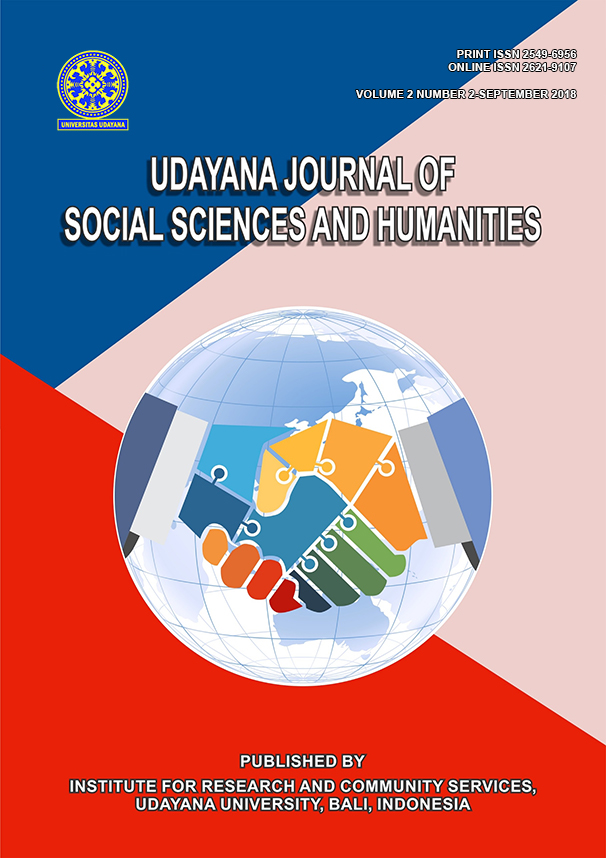Linguistic Capital as Foreign Domination Structure in Tourism Domain: a Case Study in Seminyak Bali
Abstract
Focus of this paper is the practice of using linguistic symbols in tourism. The locus is in Seminyak Bali tourism area. The purpose of this paper is to (1) identify the forms of linguistic symbols as capital practiced in tourism, (2) to pattern the linguistic dominance over people (tourists) and economtal and the duality of structure. Research data indicate that the existence of language symbols has shifted from local character to global character. Language symbols as a representation of foreign capital in the streets of Seminyak Bali as a phenomenon of foreign capital domination practice in the realm of tourism. The results found: (1) forms of linguistic capital (foreign investors), (2) forms of linguistic domination of people (tourists) and the economy (goods), and (3) the legitimacy of linguistic capital.






